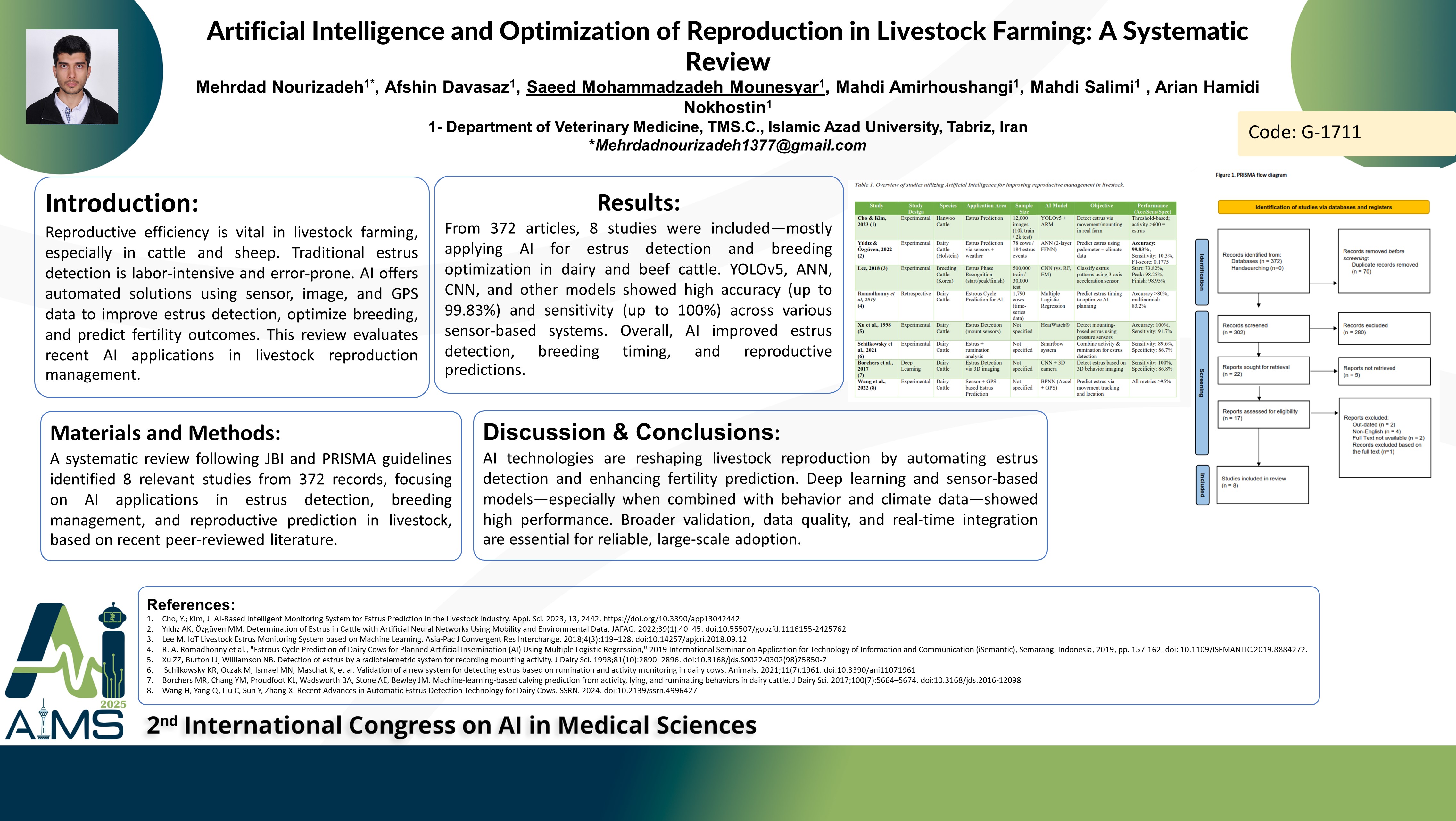هوش مصنوعی و بهینه سازی تولید مثل در دامداری، یک مرور نظام مند
کد: G-1711
نویسندگان: Mehrdad Nourizadeh *, Afshin Davasaz, Saeed Mohammadzadeh Mounesyar ℗, Mehdi Amihooshangi, Mahdi Salimi, Arian Hamidi Nokhostin
زمان بندی: زمان بندی نشده!
برچسب: سیستم های تصمیم یار بالینی
دانلود: دانلود پوستر
خلاصه مقاله:
خلاصه مقاله
Background and Aims: Achieving optimal reproductive efficiency is fundamental to livestock farming, especially in species such as cattle and sheep, where fertility directly influences productivity. Conventional methods for detecting estrus and managing breeding are often labor-intensive and prone to inaccuracies. Artificial intelligence (AI) provides innovative tools to enhance reproductive processes by improving estrus detection, optimizing breeding schedules, and boosting fertility outcomes. This systematic review aims to evaluate AI-based technologies designed to enhance reproductive performance in livestock. Method: Following the JBI and PRISMA guidelines, a systematic search was conducted across PubMed, Scopus, Embase, and Web of Science databases to identify peer-reviewed articles published within the last five years. The search strategy incorporated MeSH terms such as “Artificial Intelligence,” “Machine Learning,” “Estrus Detection,” “Breeding Management,” “Cattle,” “Livestock,” and “Precision Livestock Farming.” Studies focusing on AI applications in heat detection, breeding scheduling, genetic selection, or predicting reproductive outcomes were included. From 372 screened records, 12 studies satisfied the inclusion criteria. Results: Out of 372 screened articles, twelve met the inclusion criteria. AI-driven systems, including deep learning models and computer vision tools, have demonstrated remarkable efficacy in estrus detection and breeding management. Convolutional Neural Networks (CNNs) and Recurrent Neural Networks (RNNs) analyzing sensor data achieved sensitivity rates exceeding 90% in detecting heat patterns. Additionally, computer vision techniques have automated estrus cue identification, leading to improvements in breeding timing and conception rates. AI models aimed at predicting pregnancy success and assessing semen or embryo quality have also enhanced selection procedures. Notably, a deep learning model analyzing uterine images achieved a 15% improvement in conception rates compared to conventional methods. Conclusion: AI-powered technologies are revolutionizing livestock reproduction by automating estrus detection, enhancing insemination timing, and improving genetic selection processes. However, further validation across different breeds and conditions is essential. Future research should emphasize developing standardized protocols and enhancing model robustness to enable broader clinical implementation.
کلمات کلیدی
Artificial Intelligence,Reproductive Management,Estrus Detection,Breeding Management,Systematic Review
